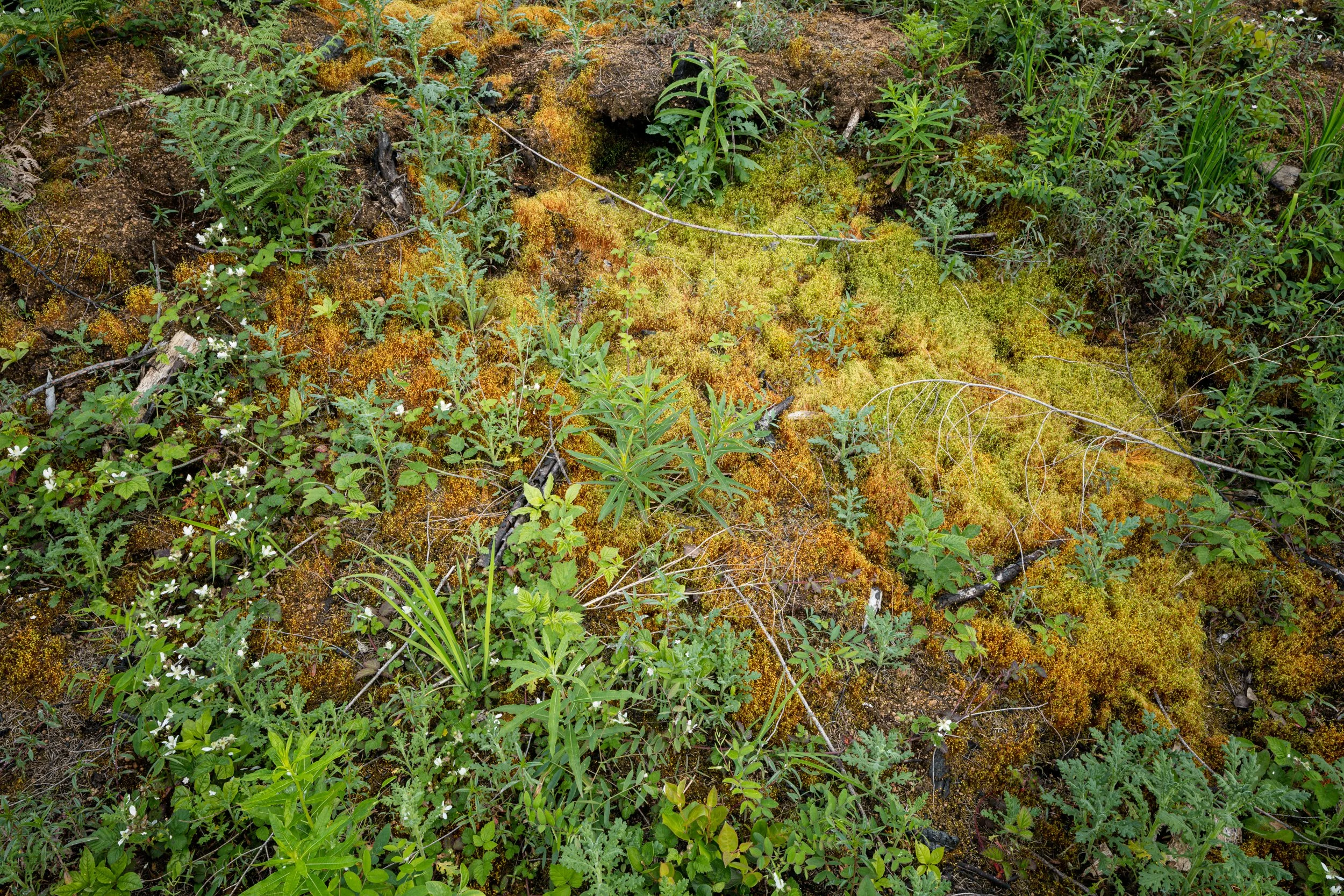












Your Custom Text Here
The story of color returning to the forest begins with the scorched needles in the tops of Douglas fir and western redcedar trees. Within a week the golden needles fell to blanket the ash-gray forest floor.
A green sheen of fire moss quickly appeared in areas of mineral soil not covered by the needlecast. The moss gradually matured to fuzzy orange carpets of sporophytes. In summer 2021 lush patches of green fireweed reached head-high and exploded with brilliant purple flowers, which then released clouds of white seeds.
Physical processes also brought color back to the skeletal forest; fractured wood and shed bark revealed the yellow and orange of exposed wood; crumbling rotten logs offered their deep, red-brown promise to nurture the soil.
The wild diversity of returning colors signaled the great diversity of returning life that will build the next forest.
The story of color returning to the forest begins with the scorched needles in the tops of Douglas fir and western redcedar trees. Within a week the golden needles fell to blanket the ash-gray forest floor.
A green sheen of fire moss quickly appeared in areas of mineral soil not covered by the needlecast. The moss gradually matured to fuzzy orange carpets of sporophytes. In summer 2021 lush patches of green fireweed reached head-high and exploded with brilliant purple flowers, which then released clouds of white seeds.
Physical processes also brought color back to the skeletal forest; fractured wood and shed bark revealed the yellow and orange of exposed wood; crumbling rotten logs offered their deep, red-brown promise to nurture the soil.
The wild diversity of returning colors signaled the great diversity of returning life that will build the next forest.